WHAT ARE MY OPTIONS FOR NON-SURGICAL HAIR REPLACEMENT?
A hair transplant procedure is the only way to guarantee effortless, convincing results. However, surgical solutions are not always viable. Such patients can choose a number of non-surgical hair replacement options. These products, procedures, and treatments either encourage hair retention and health or otherwise give the appearance of such.
CELLULAR HAIR LOSS THERAPIES - CRP, STEM CELL TREATMENT
Forhair’s unique hair loss treatments include Cytokine Rich Plasma (CRP) and Stem Cell Suspensions, the latter of which requires minor biopsies. These options encourage hair growth, density, and hair count. Five to eight times more potent than Platelet Rich Plasma (PRP), a treatment that processes the patient’s blood to create a serum that stimulates hair growth and health, Forhair’s CRP treatments provide superior results in a shorter duration. Transplant patients administered CRP, for instance, enjoy 99% regrowth within four and a half months rather than 100% regrowth in one year. Like some PRP, CRP also offers a chance of hair count increase if the follicles went inactive within five years. Along with promoting major growth via hair follicle stem cells, Stem Cell Suspensions are showing a capacity to promote hair count. Similar to CRP, Stem Cell Suspensions use samples from the patient to create the serum, in this case, small scalp biopsies.
After separating stem cell-bearing tissue and centrifuging it, the specialist then injects the serum into thinning or balding areas twice: on the day of the procedure and 60 days later. Patients’ gains in a study ranged from 24 to 34% within 23 weeks, and without any other supporting treatment. Such exceptional yield and overall hair health will most likely increase as the therapy develops. CRP and Stem Cell Suspensions are two of the most promising outpatient hair loss treatments today. Their most significant appeal is broad viability; CRP and Stem Cell Suspensions show every indication of being equally effective for both sexes. Forhair is one an of a few select clinics that offer these promising, new therapies. Learn more by scheduling an online consultation today!
Non-Surgical Solutions by Dr. Cole
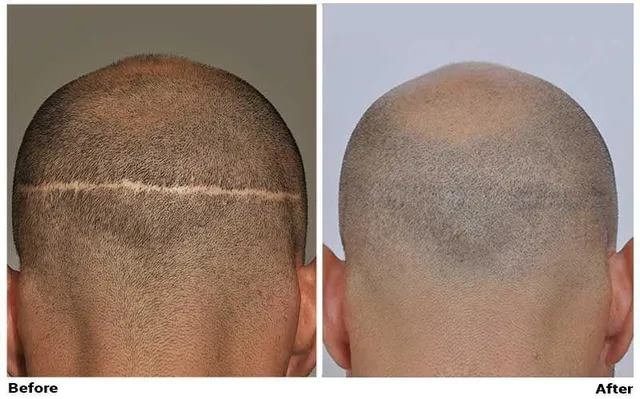
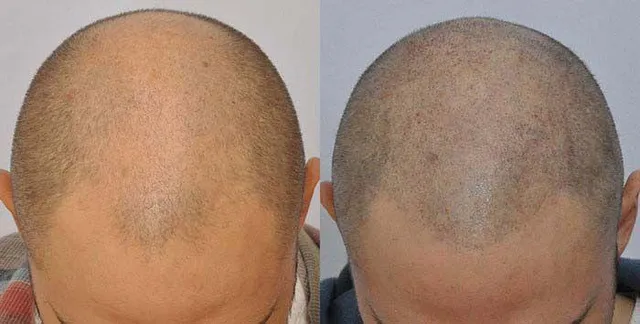
SMP RESULTS - CAMOUFLAGE HAIR TRANSPLANT SCARS
SCALP MICRO PIGMENTATION (SMP)
A versatile method that adds the appearance of hair density or growth, Scalp Micro Pigmentation (SMP) is effective for people of both sexes and lasts around five years per procedure. SMP involves specialists applying all-natural, temporary tattoos that realistically look like growing follicles. Great for men with receding hairlines that would like to wear their hair bald or closely cropped, SMP also decreases the contrast between scalp skin and hair. This strength diminishes the noticeability of thin spots. Many patients who do not qualify for hair transplants, or choose against them, combine SMP and cellular therapies like CRP + ACell or Stem Cell Suspensions. This treatment route encourages hair growth and thickness while also minimizing the appearance of thin spots. SMP is not exactly non-surgical hair replacement but, for many patients, it brings a major improvement to their appearance.
SMP is so convincing, in fact, that Forhair regularly applies it in cases where patients want to correct scars from other clinics. As always, exercise caution when selecting an SMP specialist. Make sure to research the specialist’s or clinic’s reputation, experience, and current standing within the industry. SMP is not permanent but five years is a long time nonetheless. Learn more about SMP Preparations & aftercare.
Patients unhappy with their SMP results often must resort to laser therapy to remove the ink and then reapply SMP. Most crucial of all, remember there is a big difference between hair restoration clinics and services that exclusively offer SMP. Overall excellence in hair restoration informs our application of SMP by itself or in combination with other procedures. Stunning results are the natural outcome!
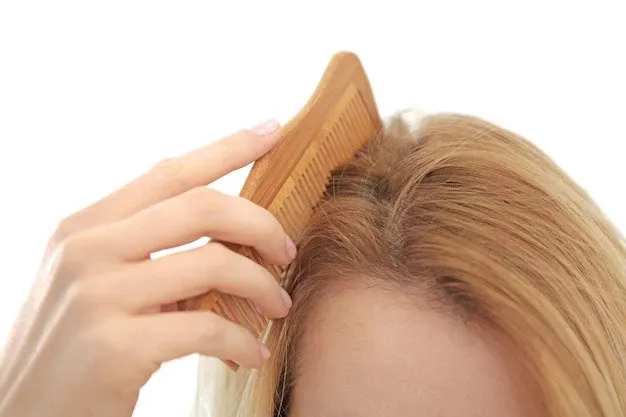
TAKE-HOME HAIR LOSS TREATMENTS
A number of take-home hair loss treatments are available for those experiencing hair loss. Options range in effectiveness but only two are right now cleared by the FDA: finasteride and minoxidil. The former blocks DHT, a hair loss androgen, while the latter, minoxidil, increases blood flow to the scalp by most specialists’ estimates. Results vary by patient. Studies, though, overall conclude that finasteride improves hair retention in most males and hair density in some males. Minoxidil, meanwhile, encourages hair retention in a large minority of males. New research indicates that local application of finasteride is far more effective than oral form, and has significantly less chance of any side effects. Few pharmacies offer the solution, though, and their formulas vary.
Dr. Cole currently prescribes it from a pharmacy in Alabama, though he recommends Dr. Chiara Insalaco’s variant from Italy for those who can routinely obtain it since the specific formula is backed by a clinical study. Finasteride and/or minoxidil may also be effective for females, but unfortunately with less prevalence. Other types of DHT blockers, such as dutasteride, show even less effectiveness.
HAIR REPLACEMENTS (HAIRPIECES, HAIR SYSTEMS, WIG)
A classic choice for non-surgical hair replacement, hairpieces can be a good solution for individuals with excessive hair loss. Young people with minimal hair loss, however, will want to pick a different option. While simple to apply and wear, using a wig also requires some maintenance. For instance, wearing a wig in summer can lead to inordinate heat. Wigs also demand routine care. Common chores include combing, styling, and washing the wig.
This must happen at least once a month but many wig owners maintain it weekly or every-other-day. Wigs even of moderate quality are hard to distinguish from normal hair. That mentioned, there is always the risk of having the wig fall off or be pulled off. Wigs can be made from a number of materials, but the most popular is either synthetic or human hair. A wig’s quality depends on construction but most premium wigs typically use human hair. Similarly, the region also matters. Asia remains the leading source for hair but European hair often receives a higher price.
The cost can vary a great amount, with prices ranging from a few hundred dollars to over five thousand. One major indication of price is production. Mass-produced wigs will almost always be more affordable than hand-made ones. Read more about hair systems.
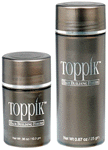
TOPPIK AND CONCEALERS
Toppik, Couvre, and Dermatch are all concealment products. These non-surgical hair replacement options make your hair appear thicker while reducing the contrast between hair and thinning or balding areas. Toppik provides color-matched micro-fibers that bind to the hair and make it appear denser. The treatment’s effects can last for up to two days if the hair is left unwashed. Couvre meanwhile is an alopecia masking lotion that reduces the contrast between your scalp and hairline. Dermatch is a hard-packed powder formula that is applied by rubbing on hair or scalp and brushing. Each application will last until the next time hair is washed. These products can be useful for those with advanced balding. However, those with moderate or mild hair loss will find the most use.
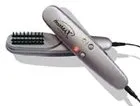
LASERCOMB - HAIRMAX
An FDA-cleared device, the HairMax LaserComb has improved hair count and/or reduced hair loss in multiple studies. This option produces its effects through phototherapy, making its patented hair-parting device essential for any therapeutic light to cover the scalp. The most recent study, to date, was published January 2014 and confirms Lasersomb’s effectiveness at increasing hair density as much by 60%. Regular use is necessary. Within a short 26-week period, though, most Lasercomb users enjoy results. Laser combs come in many versions. The 12-beam versions are usually the most effective.
Men looking to save some money can opt for the 7-beam version. Still effective, the 7-beam version does also lacks the 12-beam version’s intensity, subduing results. Those looking to save some time can also opt for the Laserband, a headband that makes brushing the scalp more cohesive simple. All HairMax laser products also come with an assortment of hair treatments. These include Density hair products and other specialty brands.

